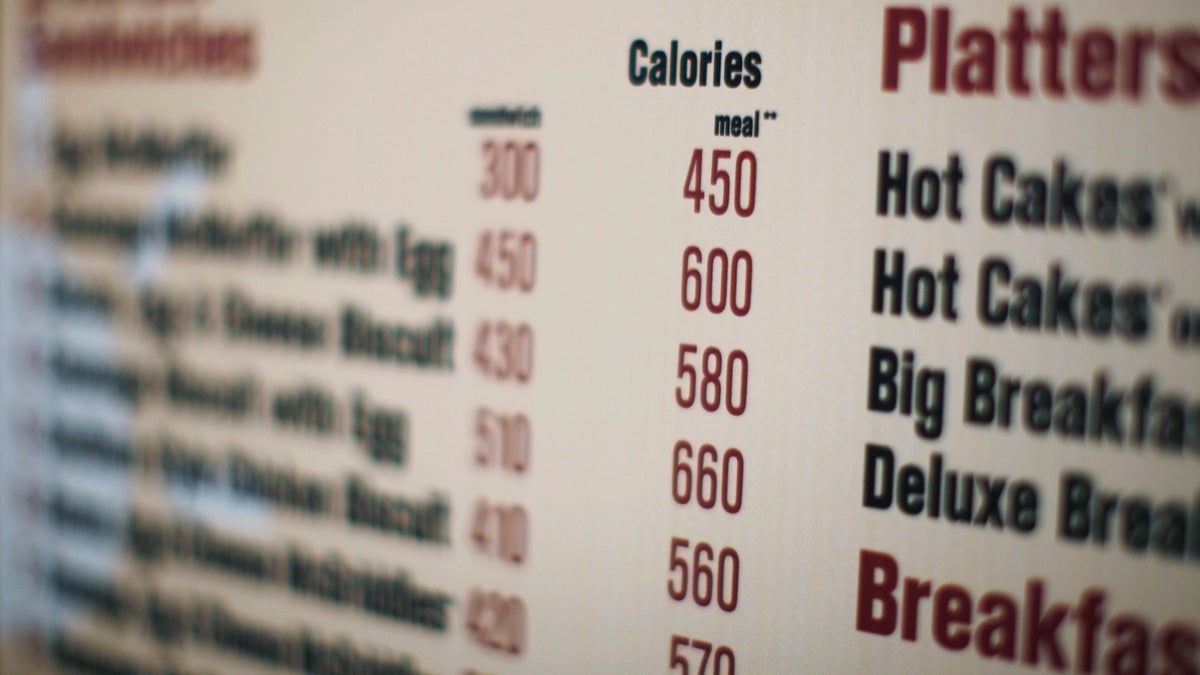If the eyes see calorie counts on the menu, does the mouth eat less?
Listen
(AP Photo/Ed Ou)
In Philadelphia, two different studies of calorie displays, getting two different answers. At fast-food places, no. At sit-down restaurants, maybe.
Since 2010, Philadelphia’s chain restaurants and food retailers have been required to display nutritional information on their menus. It’s Philadelphia’s Menu Labeling Law. The idea is to educate consumers about what they’re eating and drinking while motivating them to make healthier choices.
But does it work?
Brian Elbel, a professor at New York University’s School of Medicine, took a detailed look at whether calorie counts on fast food menus make us stop and think before eating.
Elbel and his team collected data outside fast food restaurants in Philadelphia before and after the menu labeling law was passed. The strategy was to stand outside the restaurants, get people’s receipts as they came out, ask them a few questions about their order, and compensate them with a few dollars. Then, they went on their way.
After talking with 2,000 Philadelphians who ordered fast food, Elbel’s team found that many people had actually spotted the information, but that wasn’t stopping them from ordering high-calorie foods.
“What we didn’t necessarily find was any change at the population level in the number of calories purchased,” said Elbel.
But the story is a little different when we talk about eating at a sit-down restaurant.
Maybe it’s the tablecloth?
Drexel University’s Amy Auchincloss ran a similar study to Elbel’s — stopping people coming out of sit-down restaurants, to ask what they’d eaten and if they’d noticed the calorie numbers on the menu.
The Drexel researchers spoke to 650 people exiting the same chain restaurant. Half of those people were eating at Philadelphia locations where calories were listed on the menu and half were outside the city, where restaurants were not required to provide nutritional information.
When Auchincloss analyzed just the receipts of people dining in restaurants in Philadelphia — where the Menu Labeling Law requires them to display calorie counts — she saw a big change.
“About 66 percent of the people in Philadelphia did not use the information. Thirty-four percent used it. When we looked at their purchases — the 34 percent — they ordered on average 400 less calories,” she said. “So that’s a huge drop.”
Next steps
What would have to be done to get more people across the board to take note of these numbers on the menu? Elbel says changing the labeling system could help.
“There’s some evidence that not so much numbers, but symbols or something a little more visceral and easier for people to understand, could be a little more influential,” Elbel said.
Elbel also suggests that labeling by itself probably isn’t enough to curb behavior; it’s not a silver bullet.
“We’re going to have to think of multiple other policy approaches,” he said.
WHYY is your source for fact-based, in-depth journalism and information. As a nonprofit organization, we rely on financial support from readers like you. Please give today.



